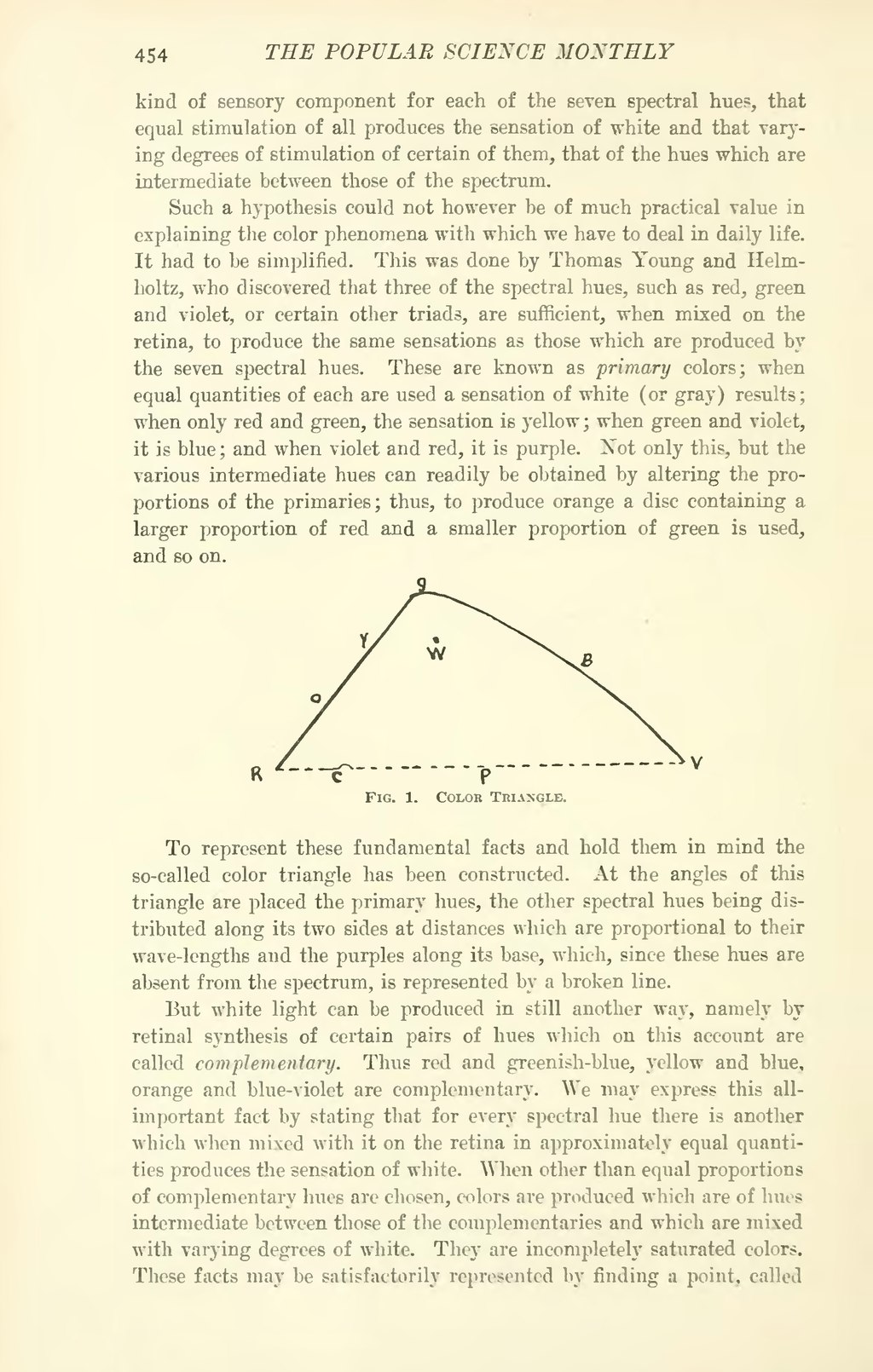kind of sensory component for each of the seven spectral hues, that equal stimulation of all produces the sensation of white and that varying degrees of stimulation of certain of them, that of the hues which are intermediate between those of the spectrum.
Such a hypothesis could not however be of much practical value in explaining the color phenomena with which we have to deal in daily life. It had to be simplified. This was done by Thomas Young and Helmholtz, who discovered that three of the spectral hues, such as red, green and violet, or certain other triads, are sufficient, when mixed on the retina, to produce the same sensations as those which are produced by the seven spectral hues. These are known as primary colors; when equal quantities of each are used a sensation of white (or gray) results; when only red and green, the sensation is yellow; when green and violet, it is blue; and when violet and red, it is purple. Not only this, but the various intermediate hues can readily be obtained by altering the proportions of the primaries; thus, to produce orange a disc containing a larger proportion of red and a smaller proportion of green is used, and so on.
To represent these fundamental facts and hold them in mind the so-called color triangle has been constructed. At the angles of this triangle are placed the primary hues, the other spectral hues being distributed along its two sides at distances which are proportional to their wave-lengths and the purples along its base, which, since these hues are absent from the spectrum, is represented by a broken line.
But white light can be produced in still another way, namely by retinal synthesis of certain pairs of hues which on this account are called complementary. Thus red and greenish-blue, yellow and blue, orange and blue-violet are complementary. We may express this all important fact by stating that for every spectral hue there is another which when mixed with it on the retina in approximately equal quantities produces the sensation of white. When other than equal proportions of complementary hues are chosen, colors are produced which are of hues intermediate between those of the complementaries and which are mixed with varying degrees of white. They are incompletely saturated colors. These facts may be satisfactorily represented by finding a point, called


